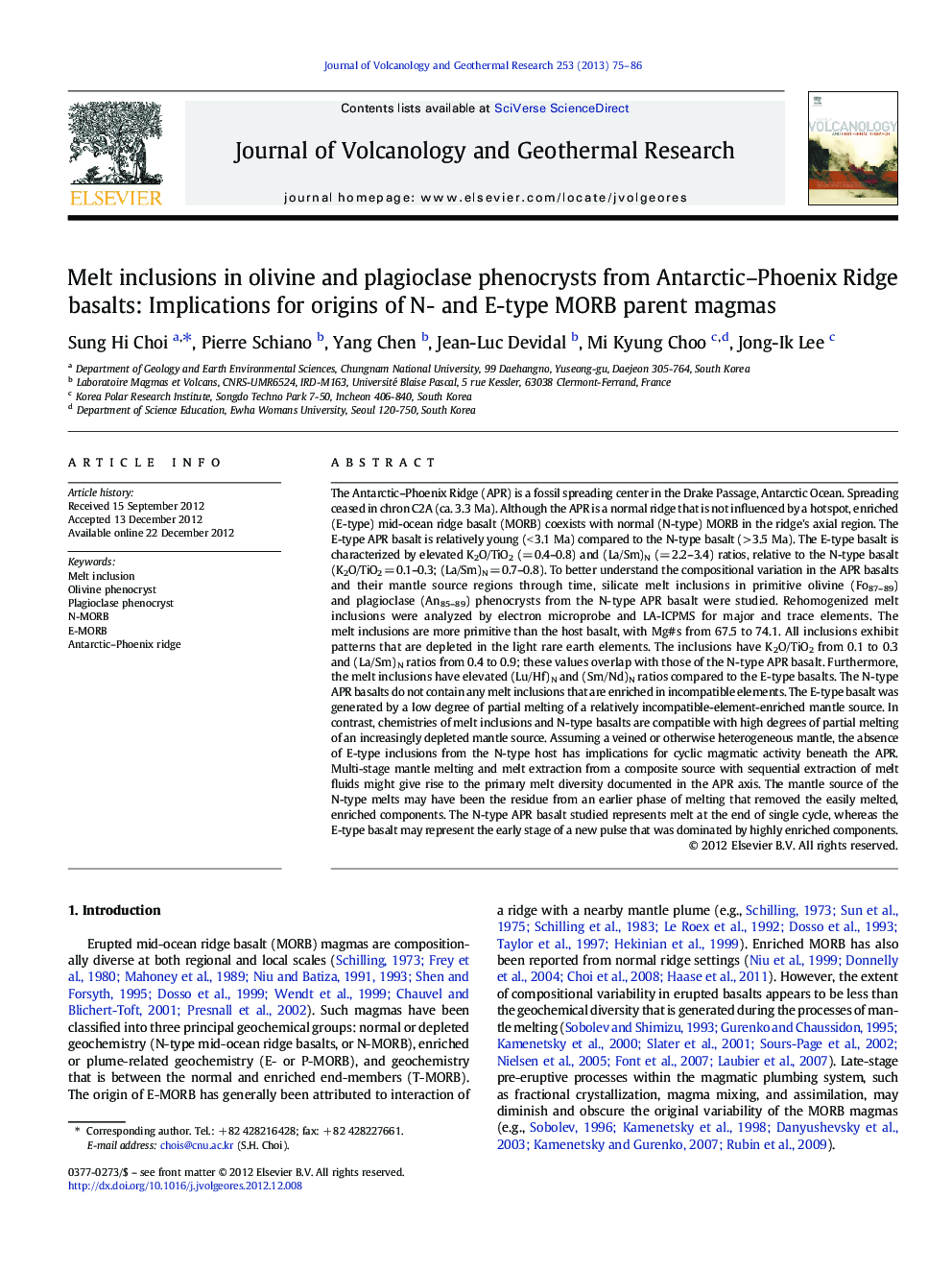| کد مقاله | کد نشریه | سال انتشار | مقاله انگلیسی | نسخه تمام متن |
|---|---|---|---|---|
| 4713470 | 1638368 | 2013 | 12 صفحه PDF | دانلود رایگان |

The Antarctic–Phoenix Ridge (APR) is a fossil spreading center in the Drake Passage, Antarctic Ocean. Spreading ceased in chron C2A (ca. 3.3 Ma). Although the APR is a normal ridge that is not influenced by a hotspot, enriched (E-type) mid-ocean ridge basalt (MORB) coexists with normal (N-type) MORB in the ridge's axial region. The E-type APR basalt is relatively young (< 3.1 Ma) compared to the N-type basalt (> 3.5 Ma). The E-type basalt is characterized by elevated K2O/TiO2 (= 0.4–0.8) and (La/Sm)N (= 2.2–3.4) ratios, relative to the N-type basalt (K2O/TiO2 = 0.1–0.3; (La/Sm)N = 0.7–0.8). To better understand the compositional variation in the APR basalts and their mantle source regions through time, silicate melt inclusions in primitive olivine (Fo87–89) and plagioclase (An85–89) phenocrysts from the N-type APR basalt were studied. Rehomogenized melt inclusions were analyzed by electron microprobe and LA-ICPMS for major and trace elements. The melt inclusions are more primitive than the host basalt, with Mg#s from 67.5 to 74.1. All inclusions exhibit patterns that are depleted in the light rare earth elements. The inclusions have K2O/TiO2 from 0.1 to 0.3 and (La/Sm)N ratios from 0.4 to 0.9; these values overlap with those of the N-type APR basalt. Furthermore, the melt inclusions have elevated (Lu/Hf)N and (Sm/Nd)N ratios compared to the E-type basalts. The N-type APR basalts do not contain any melt inclusions that are enriched in incompatible elements. The E-type basalt was generated by a low degree of partial melting of a relatively incompatible-element-enriched mantle source. In contrast, chemistries of melt inclusions and N-type basalts are compatible with high degrees of partial melting of an increasingly depleted mantle source. Assuming a veined or otherwise heterogeneous mantle, the absence of E-type inclusions from the N-type host has implications for cyclic magmatic activity beneath the APR. Multi-stage mantle melting and melt extraction from a composite source with sequential extraction of melt fluids might give rise to the primary melt diversity documented in the APR axis. The mantle source of the N-type melts may have been the residue from an earlier phase of melting that removed the easily melted, enriched components. The N-type APR basalt studied represents melt at the end of single cycle, whereas the E-type basalt may represent the early stage of a new pulse that was dominated by highly enriched components.
► E-MORB coexists with N-MORB in axial region of the Antarctic–Phoenix Ridge (APR).
► Rehomogenized melt inclusions in olivine and plagioclase phenocrysts were studied.
► All inclusions from the N-type APR basalts exhibit N-MORB geochemical features.
► Absence of E-type inclusions from the N-type host implies a cyclic magmatic activity.
Journal: Journal of Volcanology and Geothermal Research - Volume 253, 1 March 2013, Pages 75–86